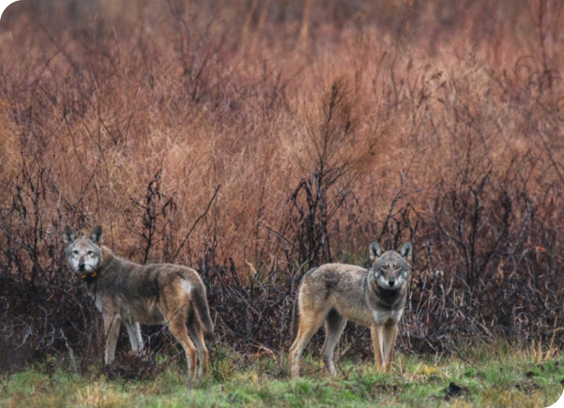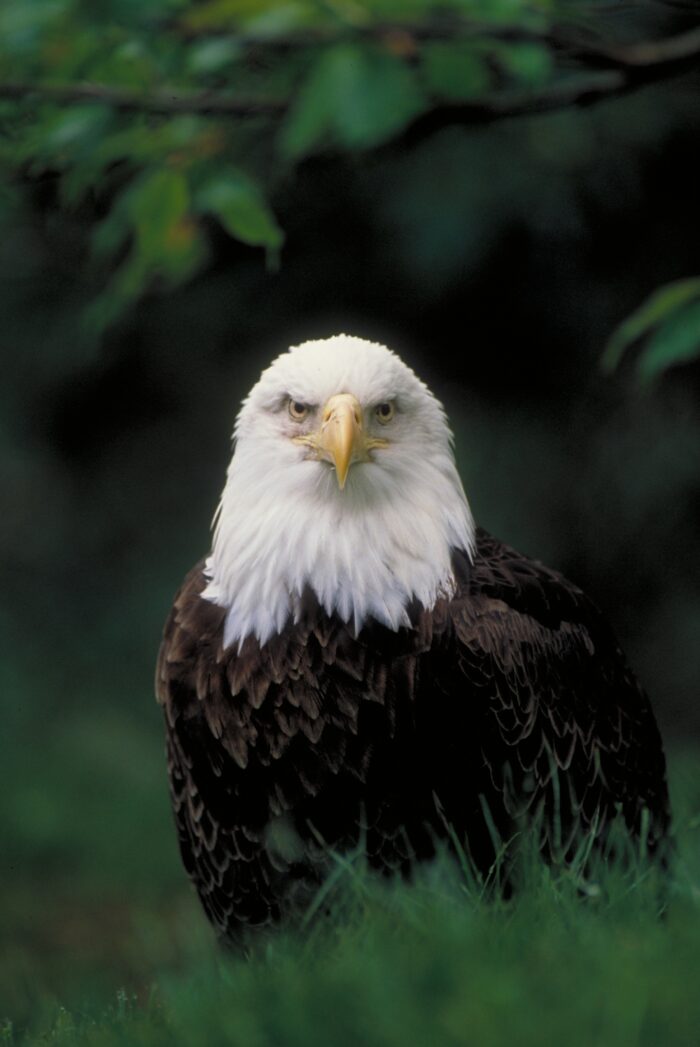Through her binoculars
“At dusk on a recent December day, I squinted through my binoculars out at the fields on Alligator River National Wildlife Refuge, searching for a wild red wolf. Secretive by nature, these iconic creatures are tough to spot — not least of all because there are only roughly 11 known adult wild red wolves in the world, all in eastern North Carolina.
After the passage of the Endangered Species Act in 1973, the handful of red wolves left in the wild were captured and bred in captivity in an attempt to save the species from imminent extinction. In 1987, the captive-bred red wolves served as the “seed stock” for a reintroduced, wild red wolf population in North Carolina. The wolves’ population quickly grew, renewing hope in the species and the new conservation law.

The ESA is credited with the recovery of some of our nation’s most iconic species, including American alligators, brown pelicans, and bald eagles. But this October, nearly 50 years after its passage, we learned 21 species weren’t as fortunate as these recovered species. They were removed from the list of ESA-protected species because federal agencies presume they are extinct. Even though I was expecting this, after the agencies’ proposal to delist the batch of species more than two years ago, I was devastated. Nearly half of these now-extinct species once lived in the South.
The hard fact is we are in the midst of a mass extinction crisis fueled by human activity, including climate change. Here in the South, the stakes are particularly high. Our world-renowned biodiversity is at risk. The Atlantic coastal plain, stretching from eastern Texas to the mid-Atlantic coastline, is the most recently recognized global biodiversity hotspot and only the second in the United States after California. Global biodiversity hotspots earn that title based on the richness of plant life — as well as the high percentage of habitat that has been altered or destroyed. It’s a bittersweet recognition. But it helps explain the urgency of acting for the South’s species before it’s too late.

The Endangered Species Act has been remarkably successful at preventing extinction, but it is a safety net — or an emergency room — for the most critical cases. If we want to prevent the worst consequences of the extinction crisis, including future batched delistings, we need to not only invest more in the ESA to prevent the forthcoming collapse of species imminently threatened with extinction. We also need to invest in preventative care for the species that are dwindling before listing under the ESA is necessary. The old adage of an ounce of prevention being worth a pound of cure is true for species conservation too. Studies show that earlier intervention is cheaper and more effective than waiting until a species is at a crisis point.
The Biden administration’s “America the Beautiful” initiative aims to conserve 30 percent of the waters and lands in the United States by 2030 to support our country’s economy, health, and well-being. Habitat loss remains the leading cause of extinction, and climate change will worsen that trend. That initiative can help connect important wildlife habitat corridors that will be important as species migrate to new latitudes and elevations in response to climate change. Protecting lands and waters — and by extension, complex ecosystems of species — can give plants and animals a chance to recover and thrive.
The Recovering America’s Wildlife Act (RAWA) could be another gamechanger by utilizing the expertise of state resource agencies and Tribal wildlife managers to conserve at-risk wildlife. Investing in local conservation and knowledge would help keep common species common and prevent the slip toward extinction and need for Endangered Species Act protections. This bipartisan effort is languishing in Congress because it needs funding.
These are the kinds of solutions we need to guarantee the success of the ESA continues for another 50 years.
The ESA should be a safety net, and we need to act now to prevent the net from breaking under too much weight, by enacting preventative and earlier conservation measures for species that might be at-risk in the future.
Ramona McGee, Leader of SELC’s Wildlife Program
For some, there is a moral imperative to try and undo the harms of human activity and protect the natural world we’ve damaged. Maybe that’s not you, but it should be. Take note of the ways animals make our memories — and our futures — richer.
You may not have the pleasure of hearing a wild red wolf’s shrill call through the North Carolina woods, but perhaps you’ve chased fireflies through your yard on a sticky summer night or run to the shoreline to catch a glimpse of a pod of dolphins’ fins in the waves. Maybe you remember playing with crayfish or horseshoe crabs as a kid, or perhaps you’ve marveled at herons and turtles from the shore of a favorite river or stream.
There are other impacts you may not be aware of, like the critical role mussels and oysters play in keeping our water clean, or that bats save U.S. agriculture between $3.7 to $53 billion a year in pest control and pollination. Healthier ecosystems contribute to our own human health and economic well-being in myriad ways.
While there is much more to be done to conserve animals and plants in the years ahead, there is much to celebrate in reflecting on half a decade of conservation, success with the Endangered Species Act. There is renewed hope for wild red wolves as pups are again being born in the wild and more releases from captivity are planned for the future. I didn’t catch a glimpse of a wolf during my recent trip to the wildlife refuges where they roam — but I’ll be back. And next time, hopefully my odds will be better as the population grows, with the help of the Endangered Species Act’s conservation efforts.”
—Wildlife Program Leader Ramona McGee
